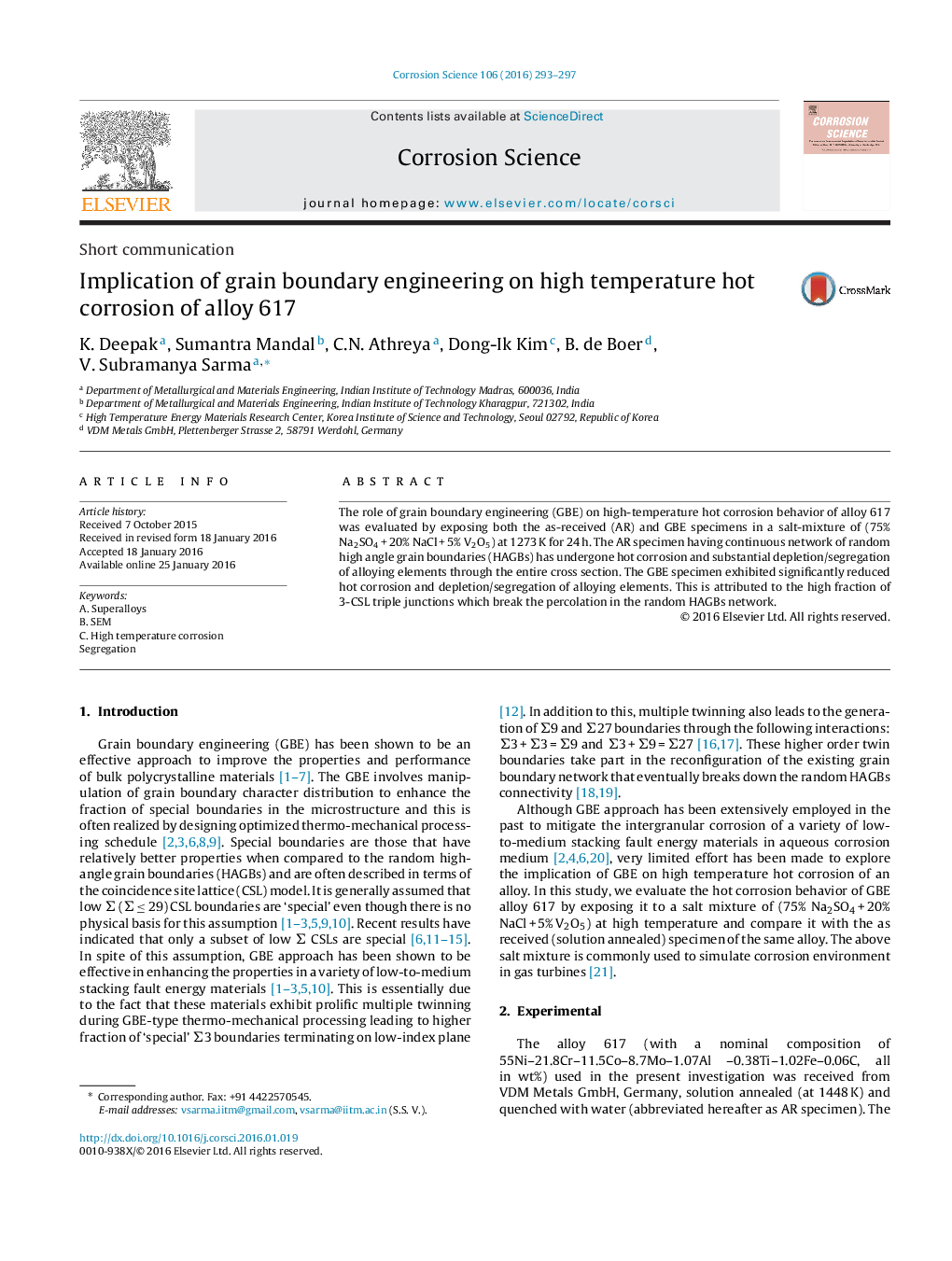| Article ID | Journal | Published Year | Pages | File Type |
|---|---|---|---|---|
| 7894743 | Corrosion Science | 2016 | 5 Pages |
Abstract
The role of grain boundary engineering (GBE) on high-temperature hot corrosion behavior of alloy 617 was evaluated by exposing both the as-received (AR) and GBE specimens in a salt-mixture of (75% Na2SO4 + 20% NaCl + 5% V2O5) at 1273 K for 24 h. The AR specimen having continuous network of random high angle grain boundaries (HAGBs) has undergone hot corrosion and substantial depletion/segregation of alloying elements through the entire cross section. The GBE specimen exhibited significantly reduced hot corrosion and depletion/segregation of alloying elements. This is attributed to the high fraction of 3-CSL triple junctions which break the percolation in the random HAGBs network.
Related Topics
Physical Sciences and Engineering
Materials Science
Ceramics and Composites
Authors
K. Deepak, Sumantra Mandal, C.N. Athreya, Dong-Ik Kim, B. de Boer, V. Subramanya Sarma,
